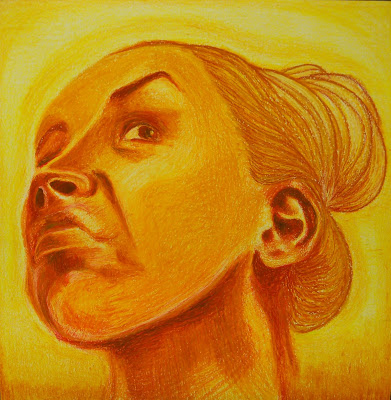

Prep. Drawing for Laughter
Charcoal and graphite on paper
18 x24"
2007
I should mention that the way the exhibition is now arranged will direct relationships between one piece to its counterpart. In other words, every facial expression has an "opposite" and will be facing it. Laughter, for example, will be located directly opposite of Rage. If you can recall the Rage image, it's clear that the face uses almost the same muscles when it forms an angered expression and when it forms one of laughter. Interestingly, becoming enraged represents incarcerating oneself by one's own emotions while laughter represents the exact opposite. Laughter is an expression of liberation. I think of it is an expelling of positive energy. Sometimes, laughter can be seen as a mask, however. In this case, it would serve as a protection device.
In retrospect, I'm starting to think that all of the emotions we experience are negative but in order to proceed with life we supercede those negative emotions with positive ones. I'm discovering that the will to be positive may be just as important as the expressing of positive emotions.
The first image is a photograph of the prep. drawing for the print photographed on the bottom.









